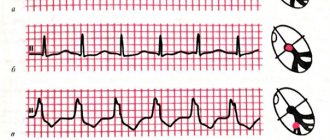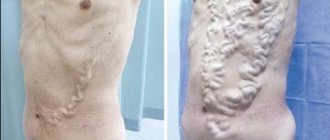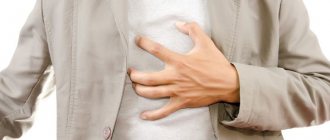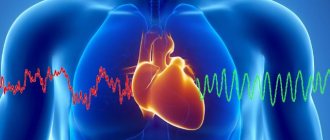What is Xanthomatosis?
A xanthoma is a skin lesion caused by the accumulation of fat in macrophage immune cells in the skin and, less commonly, in the layer of fat under the skin.
Some types of xanthoma indicate lipid disorders (eg, hyperlipidemia or high blood fats), where they may be associated with an increased risk of coronary heart disease and sometimes pancreatitis.
Xanthomas are classified into the following types depending on where they are found on the body and how they develop.
Traditional medicine for xanthelasma
After xanthelasma removal, in order for healing to occur, it is necessary to eat properly. It is also possible to use folk remedies.
The main type of treatment in traditional medicine is the collection of rose hips, which has a preventive effect in the postoperative period.
Before using any ointment or other means of therapy, you should consult your doctor in order to prevent possible complications.
Eruptive xanthoma
- Lesions usually appear as seedlings of small red-yellow papules
- They most often occur on the buttocks, shoulders, arms and legs, but can occur throughout the body
- Rarely the face and inside of the mouth are affected
- Lesions may be tender and usually itchy
- Lesions may resolve spontaneously within a few weeks
- Associated with hypertriglyceridemia (increased levels of triglycerides in the blood) often in patients with diabetes mellitus (diabetes mellitus)
Common xanthoma
- Xanthoma-like lesions are caused by a rare form of histiocytosis.
- Lipid metabolism is normal.
- The skin lesions usually consist of hundreds of small yellowish-brown or reddish-brown bumps that are usually evenly distributed on both sides of the face and torso. They can be especially hard on the armpits and groin.
- Small bumps may join together to form sheets of thickened skin.
- In 30% of affected people, the mucous membranes of the mouth, respiratory tract or eyes (mucous membranes) are affected. Warty plaques in the mouth are called verruciform xanthoma.
- 40% of affected people develop diabetes insipidus, a condition that results in an inability to control water loss (leading to constant thirst and excessive urine production). This occurs due to the overgrowth of histiocytes on the lining of the brain (meninges).
- May affect internal organs (eg liver, lungs, kidneys, etc.)
- Self-limiting and eventually improves on its own, but may persist for many years.
What causes xanthoma?
There are several main disorders in which xanthoma is caused by a disorder of lipid (fat) metabolism. Because lipids are insoluble in water, they combine with proteins to form compounds called lipoproteins. Lipoproteins transport lipids and cholesterol in the blood to various parts of the body. Based on their size and weight, common lipoproteins are classified as chylomicrons, very low-density lipoproteins, low-density lipoproteins, and high-density lipoproteins (Fredrickson classification). They all play a role in maintaining the metabolic functioning of the body.
Changes in lipoproteins may result from a genetic defect (eg, primary hyperlipoproteinemia) or from an underlying systemic disorder such as diabetes mellitus, hypothyroidism, or nephrotic syndrome. These underlying diseases can cause elevated levels of certain lipids and lipoproteins, which then manifest as cutaneous xanthoma.
Monogenic familial hypercholesterolemia: type IIa
Mutation in the LDL (Low Density Lipoprotein) receptor
- High LDL level
- Total cholesterol in heterozygotes is 9-14 mmol/l
- Total cholesterol in homozygotes is 15-30 mmol/l
Polygenic hereditary hypercholesterolemia type IIIA
Differences between structures
Xanthomas differ from xanthelasmas not only in location, but also in size. The former are large tumor-like structures and reach 5 mm or more. They are located on the face or flexor surfaces of the upper and lower extremities. Xanthelasmas appear as small yellow dots on the eyelids. Another difference between them is that xanthomas do not progress. Xanthelasmas can increase in size and rise above the surface of the skin. Xanthomas have some similarities with lipomas - benign neoplasms of the skin filled with a fatty, foul-smelling mass.
Wide range of results
Polygenic familial combined hyperlipidemia: type IIb
- Mixed genetic and life history causes
- Elevated total cholesterol levels
- Elevated triglyceride levels
- Low HDL (High Density Lipoprotein) Cholesterol
- Elevated LDL cholesterol levels
- LDL may be normal levels but denser and more likely to cause atheroma (sebaceous cyst)
Moderate hypertriglyceridemia
- Often also associated with high blood pressure, obesity, diabetes, metabolic syndrome, high insulin levels, high uric acid levels
- This may be due to alcohol or medications such as systemic steroids, isotretinoin, acitretin
- Triglycerides 2_10 mmol/l
- Often associated with low HDL cholesterol levels
Severe hypertriglyceridemia: Types 1 and V
- Mixed genetic and life history causes
- Diabetes
- Familial LPL (lipoprotein lipase) deficiency
- Triglycerides > 10 mmol/l
- Elevated total cholesterol levels
- Raised chylomicrons
- Elevated LDL cholesterol levels
Wide beta hyperlipoproteinemia: type III
- Rare mutation of the apo E gene
- Triglycerides 5-20 mmol/l
- Total cholesterol 7-12 mmol/l
The reason for the appearance of xanthoma with normal levels of fat in the blood is currently unclear.
What examination is required to treat xanthoma?
A skin biopsy may be required to confirm the clinical diagnosis of xanthoma.
Appropriate blood and urine tests and x-rays are performed to determine the cause of abnormal lipoprotein levels, if present. The risk of cardiovascular disease, including heart attacks, peripheral vascular disease and stroke, increases with elevated levels of certain lipoproteins. It is important to identify contributing factors so that appropriate therapy can be instituted.
Diagnostics
Xanthoma has quite pronounced and specific symptoms, which is why practically no problems arise in the process of establishing the correct diagnosis.
Primary diagnosis includes a number of activities performed directly by a dermatologist. These include:
- studying the medical history - to determine the most characteristic pathological predisposing factor for a particular person;
- familiarization with life history;
- thorough examination of the patient’s skin;
- a detailed survey of the patient - to draw up a complete clinical picture of the course of the disease.
Laboratory studies are limited to the following tests:
- general clinical blood test;
- blood biochemistry;
- lipidogram.
Instrumental procedures are presented:
- fibrogastroscopy – to identify gastric xanthoma;
- skin xanthoma biopsy.
Fibrogastroscopy
Such a disorder must be differentiated from:
- histiocytosis X;
- elastic pseudoxanthoma;
- reticulohistiocytomas.
How does xanthoma heal?
The primary goal of treating xanthoma that is associated with an underlying lipid disorder is to identify and treat that lipid disorder. In many cases, treatment of the underlying disorder will reduce or resolve the xanthoma. In addition, treating hyperlipidemia will reduce the risk of heart disease, and treating hypertriglyceridemia will prevent pancreatitis. Lipid disorders are treated with changes in diet and lifestyle, with or without medications.
Dietary measures should include:
- Prepare most dishes from vegetables, salads, grains and fish
- Minimize saturated fat (found in meat, butter, other dairy products, coconut oil, palm oil)
- Minimize your intake of simple refined sugars found in carbonated drinks, sweets, cookies and cakes
- If you are obese or overweight, aim to lose weight slowly by reducing your calorie intake and increasing exercise.
Very effective medications may also be prescribed. These may include:
- Statins are pharmaceutical drugs designed to combat high levels of cholesterol in human blood (HMG-CoA reductase inhibitors). Such as simvastatin and atorvastatin reduce the production of cholesterol by the liver, resulting in lower LDL cholesterol, increased HDL cholesterol and a mild reduction in triglyceride levels. Treatment should be monitored by regular blood tests to check lipid levels and ensure that liver and muscle enzymes are normal, as statins sometimes cause problems, especially when given at higher doses.
- Fibrates, such as bezafibrate, may be added to reduce triglyceride production by the liver, lower triglyceride levels, and increase HDL cholesterol levels. They may cause gastrointestinal side effects.
- Ezetimibe may be added in high-risk patients or those who do not tolerate higher doses of statins. It reduces the absorption of cholesterol from the intestines, lowering total and LDL cholesterol.
- Nicotinic acid lowers cholesterol, LDL cholesterol and triglycerides, and increases HDL cholesterol. At therapeutic doses of at least one gram per day, it causes redness of the skin. Its analogue, acipimox, is better tolerated.
- Cholestyramine and colestipol are rarely used because they are not as effective as the drugs listed above and are poorly tolerated.
Surgery or locally destructive techniques may be used to remove xanthomas that do not resolve spontaneously or with treatment of the underlying cause. Advanced xanthoma that affects vital organ functions can be treated with chemotherapy drugs or radiation therapy.
Symptoms
In addition to the main clinical signs - the appearance of nodes, spots and plaques of varying volume and shade, the symptomatic picture may also include the following manifestations:
- thinning of the skin in places where xanthomas or xanthelasmas form;
- slight skin itching;
- mild pain in the stomach.
Such signs appear in both adults and children.
In the case of the formation of such neoplasms against the background of other pathologies, the symptoms of the underlying disease are always added to the main clinical picture, which acted as a provocateur for lipid metabolism disorders.










